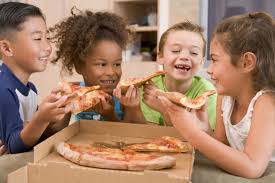Visual Processing Disorders: In Detail
By: National Center for Learning Disabilities (NCLD)
There are lots of ways the brain processes visual information. Weaknesses in a particular kind of visual processing can often be seen in specific difficulties with practical, everyday tasks.
Below is an explanation of each of the types of visual processing. Each category also includes:
- Possible difficulties that can occur if there is a weakness in that area
- Possible strategies that may help overcome the difficulties
Be aware that weakness can occur in one or more category at the same time.
See Visual Processing Disorders - Challenges & Strategies by Age Group for an overview of visual processing disorders through the different developmental stages of life.
 It is also important to note that many people without any kind of visual processing disorder experience problems with learning and behavior from time to time. However, if a person consistently displays difficulties with these tasks over time, testing for visual processing disorders by trained professionals should be considered.
It is also important to note that many people without any kind of visual processing disorder experience problems with learning and behavior from time to time. However, if a person consistently displays difficulties with these tasks over time, testing for visual processing disorders by trained professionals should be considered.
Visual Discrimination
The Skill:
Using the sense of sight to notice and compare the features of different items to distinguish one item from another
Difficulties Observed
- Seeing the difference between two similar letters, shapes or objects
- Noticing the similarities and differences between certain colors, shapes and patterns
Types of Helpful Strategies:
- Clearly space words/problems on a page
- Anticipate confusions and point out examples of correct responses
Visual Figure-Ground Discrimination
The Skill:
Discriminating a shape or printed character from its background
Difficulties Observed
- Finding a specific bit of information on a printed page full of words and numbers
- Seeing an image within a competing background
Types of Helpful Strategies:
- Practice with 'find the item' challenges, such as "Where's Waldo?"
- Use an index card or marker when reading to blot out distraction of other words
- Highlight useful information while reading
Visual Sequencing
The Skill:
The ability to see and distinguish the order of symbols, words or images
Difficulties Observed
- Using a separate answer sheet
- Staying in the right place while reading a paragraph. Example: skipping lines, reading the same line over and over
- Reversing or misreading letters, numbers and words
- Understanding math equations
Types of Helpful Strategies:
- Combine reading with oral presentation.
- Color code written instruction
Visual Motor Processing
The Skill:
Using feedback from the eyes to coordinate the movement of other parts of the body
Difficulties Observed
- Writing within lines or margins of a piece of paper
- Copying from a board or book
- Moving around without bumping into things
- Participating in sports that require well-timed and precise movements in space
Types of Helpful Strategies:
- Allow use of a computer
- Allow use of a tape recorder for lectures
- Substitute oral reports for written ones
- Provide a "note buddy" to check that topic notes are clear and well-organized
Visual Memory
The Skill:
There are two kinds of visual memory:
- Long-term visual memory is the ability to recall something seen some time ago
- Short-term visual memory is the ability to remember something seen very recently
Difficulties Observed
- Remembering the spelling of familiar words with irregular spelling
- Reading comprehension
- Using a calculator or keyboard with speed and accuracy
- Remembering phone numbers
Types of Helpful Strategies:
- Provide handouts that are clearly written.
- Provide oral instruction to reinforce written directions
Visual Closure
The Skill:
The ability to know what an object is when only parts of it are visible
- Recognizing a picture of a familiar object from a partial image. Example: A truck without its wheels
- Identifying a word with a letter missing
- Recognizing a face when one feature (such as the nose) is missing
Types of Helpful Strategies:
Practice with jigsaw puzzles and rebus-type games
Spatial Relationships
The Skill:
The ability to understand how objects are positioned in space in relation to oneself. This involves the understanding of distance (near or far), as well as the relationship of objects and characters described on paper or in a spoken narrative
Difficulties Observed
- Getting from one place to another
- Spacing letters and words on paper
- Judging time
- Reading maps
Types of Helpful Strategies:
- Practice estimating distance with ball games and using a tape measure
- Create maps and travel logs
- Practice social skills that focus on judging appropriate physical proximity to others
Copyright 2008 by National Center for Learning Disabilities, Inc., http://www.ncld.org. All rights reserved.